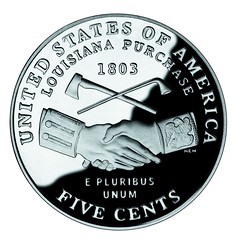The film Introduction to Haiti (made in 1942 under the auspices of the U.S. Office of Inter-American Affairs) gives a haunting snapshot of mid-twentieth-century Haiti including vintage footage of the now ruined Presidential Palace and Notre Dame Cathedral in Port-au-Prince.
Narrated by radio announcer Milton Cross, the 10-minute film focuses on Haiti as a tourist destination and on the freedom that Haitian citizens enjoy. This film depicts Haiti in a hopeful but unfortunately brief moment, when the freedom and prosperity of its general populace was at its peak.
1942 marked a dozen years of rule by democratic leaders in Haiti. But just four years later, the country would experience the first of two military coups. Those were followed by the violent, corrupt regime of “Papa Doc” Duvalier, and then later his son “Baby Doc”–here’s a timeline of the Duvalier era.
Haiti’s history is colorful to say the least. And violent and tragic. The country’s first coup d’état occurred just 2 years after declaring independence. Although they were the second republic in the Western Hemisphere, after the U.S., our country didn’t recognize them for more than half of a century due to concerns by southern states that their own slaves would revolt as the Haitian people had against the French.
The country has a long history of disastrous seismic activity as well. A devastating 7.5 magnitude earthquake in the late 18th Century also leveled the capital city; although it only killed 200 people because there was a long rumbling preceding it which gave people time to run outside. Another major quake in 1842, exactly a hundred years before this film, completely destroyed Le Cap, the country’s second-largest city.
But there is another aspect of Haitian history that every American should be aware of; it is the debt that we indirectly owe to the island nation for our country’s very existence as we know it.
The successful revolt of the French colony Saint-Domingue, which became the independent nation of Haiti, convinced Napoleon to give up all colonizing in the Western Hemisphere and focus on Europe. As a result France sold off some land that they otherwise would have held onto in a transaction known as The Louisiana Purchase. That little western addition was pretty key for the up and coming United States at the start of the 19th Century.
You can read more about the Haitian revolution on The Louverture Project a wiki dedicated to the era of 1791-1804. For more on the history (and future) of buildings in Haiti check out the most recent episode of KCRW‘s Design and Architecture program, which discusses this topic in detail. Finally for a broad overview of the history of Haiti, the World History Archives has a great collection of resources that a professor named Bob Corbett put online, including his own lectures, that cover the area from pre-Columbian times up to 1990.







